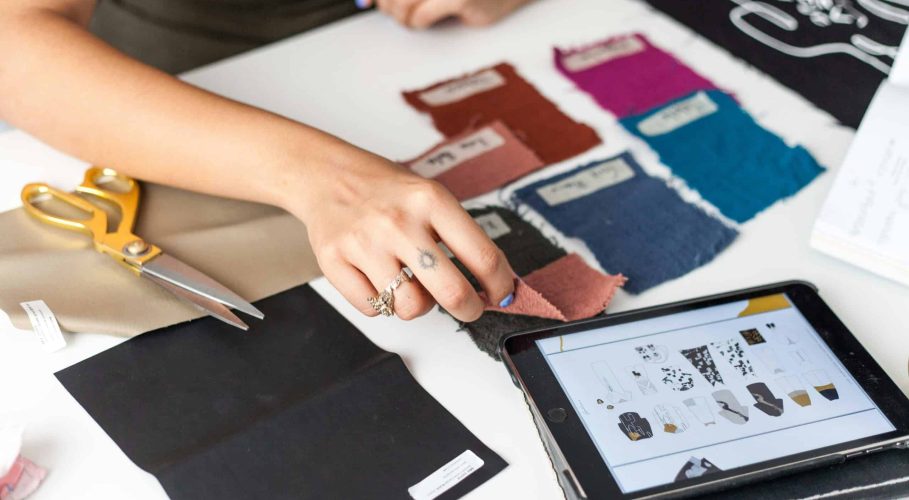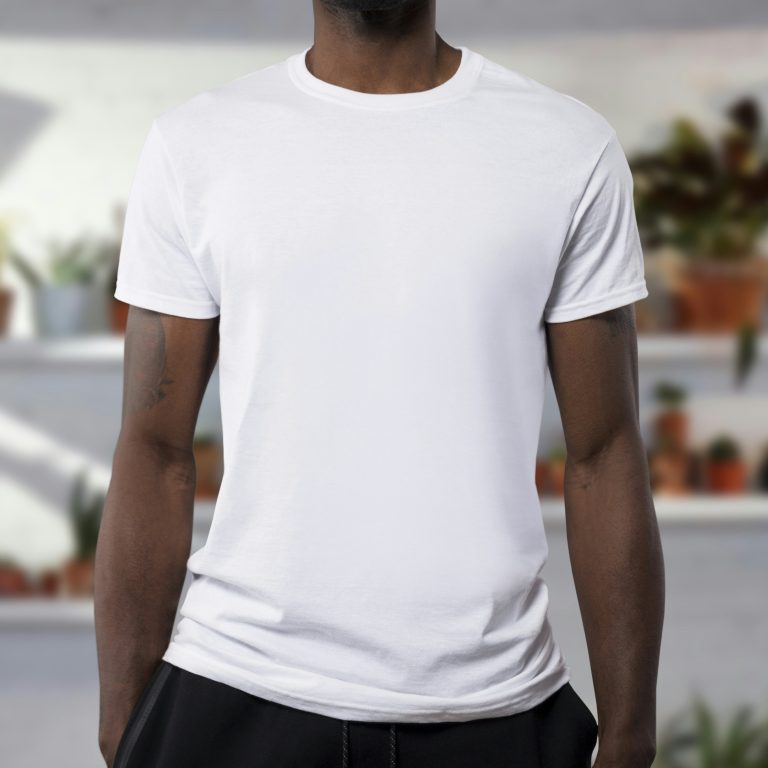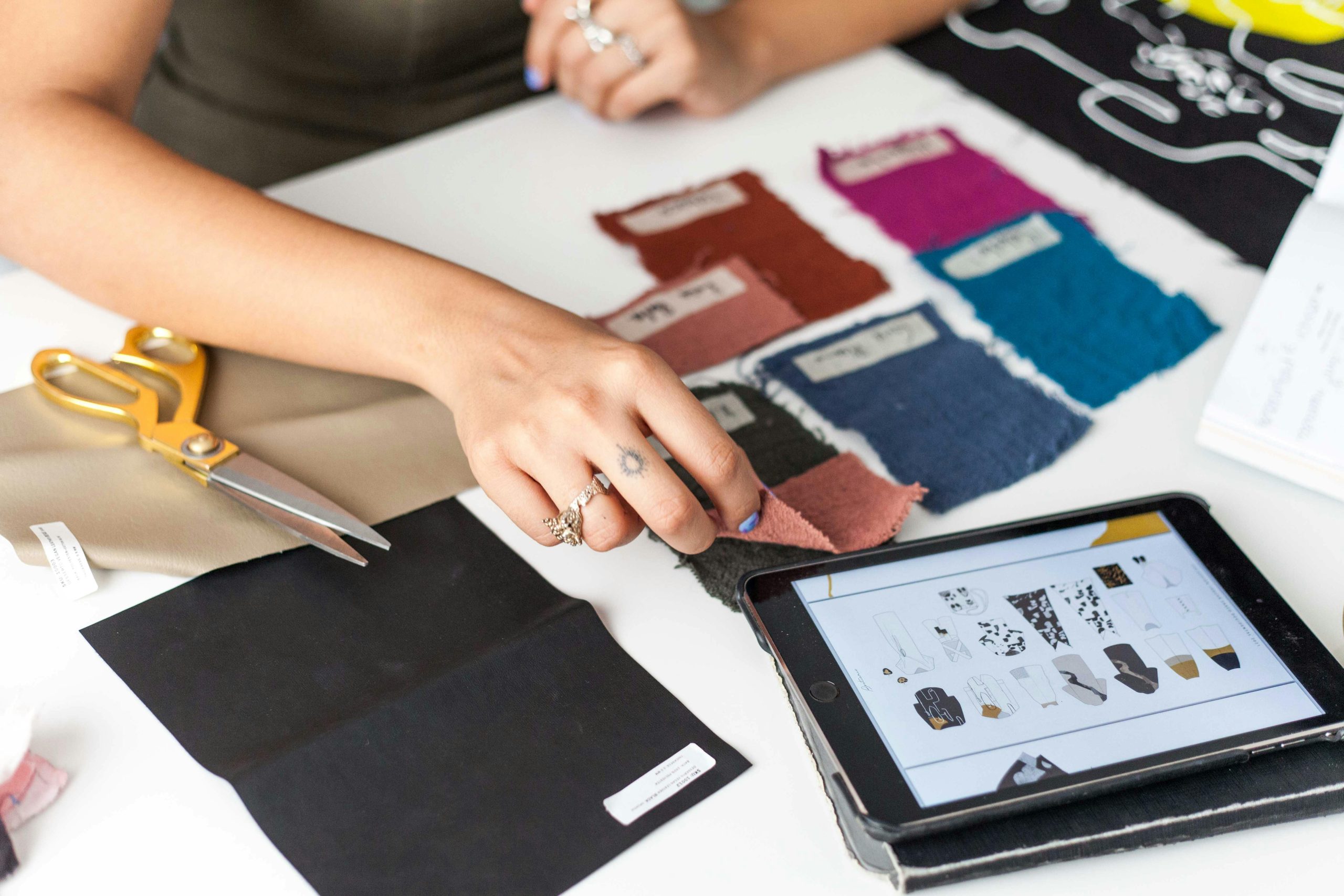Common mistakes new fashion brands make and how to avoid them
October 6, 2025
Avoiding the pitfalls that can make or break a new fashion brand

Launching a fashion brand is an exciting journey—one filled with creativity, ambition, and the dream of seeing your designs come to life. But in an industry where 50% of new fashion businesses fail within the first four years (source: The State of Fashion 2025, McKinsey & Company), avoiding common mistakes can mean the difference between success and costly setbacks.
Many emerging designers focus solely on their products, believing that great clothing will sell itself. While quality and creativity matter, a strong business foundation is just as crucial. From branding missteps to pricing errors, new fashion entrepreneurs often face the same pitfalls—most of which could be avoided with the right strategy.
In this article, we will explore the most common mistakes fashion startups make and, more importantly, how you can sidestep them. Whether you are just starting out or looking to refine your approach, these insights will help you build a brand that stands out and thrives.
Lack of a clear brand identity
One of the biggest mistakes new fashion brands make is failing to establish a strong brand identity. Without a defined aesthetic, message, and target audience, your brand risks getting lost in an oversaturated market.

The mistake: trying to appeal to everyone
Many emerging designers fall into the trap of creating collections that cater to too many styles or demographics. The result is a brand that lacks coherence and fails to leave a lasting impression. Fashion is a highly competitive industry—if your brand does not have a strong, recognizable identity, customers will struggle to remember it.
A common example is fast-fashion-inspired startups that mimic popular trends without a unique twist. While this approach may generate short-term sales, it rarely leads to long-term brand loyalty. Without a clear brand identity, customers may purchase a single item but will not return because there is no deeper connection to the brand.
How to avoid it: define your niche and unique story
- Find your niche: As detailed in our Article Finding Your Fashion Brand Niche, instead of trying to compete with every fashion brand out there, narrow your focus. Do you specialize in minimalist streetwear, luxury sustainable fashion, or size-inclusive activewear? A well-defined niche helps your brand stand out and attracts a dedicated customer base.
- Craft a compelling brand story: Consumers do not just buy clothes—they buy into the story behind them. Brands like Patagonia thrive because they connect deeply with their audience through their commitment to sustainability. What inspired you to create your brand? What values drive your designs? Infusing your passion and purpose into your messaging helps customers form an emotional connection with your brand.
- Develop a strong visual identity: Consistency is key. Your logo, typography, color palette, and overall aesthetic should align with your brand message. A high-end brand should look polished and luxurious, while an eco-friendly brand might opt for earthy tones and natural textures. Every touchpoint, from packaging to social media presence, should reflect your identity.
Real-world example: how a small brand stood out
A strong example of brand identity is Pangaia, a sustainable fashion brand that skyrocketed in popularity by blending science with fashion. They did not just sell hoodies—they told a story about environmentally friendly innovation. By focusing on sustainable materials, minimalist aesthetics, and a strong brand message, they carved out a unique space in the crowded fashion market. Their success demonstrates the power of a clear brand identity in attracting a loyal audience.
Actionable takeaways
- Define your niche before launching your first collection.
- Develop a brand story that connects with your audience on a deeper level.
- Maintain a consistent visual identity across all platforms, including your website, social media, and packaging.
A strong brand identity is more than just aesthetics—it is about creating an emotional connection with your customers. The more defined and memorable your brand is, the more likely it is to attract loyal customers who believe in your vision.
Recent Posts
Follow Us
Follow us to explore more stories, insights, and daily inspiration we share
Ready to Turn Your Idea into Reality?
If you’ve got an idea that won’t let you rest, we’re ready to help. Contact us on WhatsApp, and let’s talk about how we can bring your vision to life with our full range of services.
Inadequate market research

Many new fashion brands enter the market without fully understanding their audience, competitors, or pricing strategies. A lack of research can lead to poor sales, misguided marketing efforts, and a failure to resonate with potential customers.
Some new fashion entrepreneurs design products based on personal taste rather than market demand. While passion is important, failing to validate your ideas with real consumer insights can result in collections that do not sell. Additionally, neglecting competitor analysis can lead to unrealistic pricing, weak differentiation, or ineffective branding.
According to a study by CB Insights, 42% of startups fail because there is no sufficient market demand for their products or services. This underscores the importance of thoroughly researching customer preferences, behaviors, and pain points before launching a fashion brand.
To avoid this mistake, conduct thorough market research. Identify the age, gender, lifestyle, and purchasing habits of your ideal customers. Use surveys, social media polls, and industry reports to gather real data. Study successful brands in your niche to understand what works and identify gaps in the market that your brand can fill. Look at their pricing strategies, marketing approaches, and customer engagement techniques.
Testing your products before launching can also make a huge difference. Consider producing a small batch of products and gathering feedback before a full launch. This can help you refine designs, pricing, and messaging based on actual customer responses.
A good example is the success of Gymshark, a brand that started by targeting fitness enthusiasts on social media. Instead of launching blindly, they engaged directly with their audience, used influencer marketing, and refined their offerings based on customer feedback. Their deep understanding of their niche helped them grow from a small startup to a multi-million-dollar brand.
Market research is the foundation of a successful fashion brand. The better you understand your audience and competitors, the more equipped you are to make informed business decisions. In the next section, we will look at another common pitfall: pricing mistakes and how to avoid them.
Underestimating production costs and pricing
Pricing is one of the most critical aspects of running a fashion brand, yet many new entrepreneurs miscalculate costs and undervalue their products. A poorly planned pricing strategy can lead to unsustainable profit margins, cash flow issues, and ultimately, business failure.
A common mistake is setting prices based solely on production costs without considering additional expenses such as packaging, shipping, marketing, and operational costs. Many emerging brands also fall into the trap of underpricing their products in an attempt to attract customers, only to realize later that they are operating at a loss.
A study by Statista found that pricing is one of the top challenges for fashion startups, with many struggling to balance affordability and profitability (source: Statista). If your pricing is too low, customers may perceive your brand as low quality. If it is too high, you risk alienating your target market.
To avoid this mistake, calculate your total costs carefully. Factor in raw materials, labor, logistics, branding, and marketing efforts. Then, determine a healthy profit margin that ensures sustainability. Many successful brands use the keystone pricing model, which involves doubling the production cost to set the retail price. However, this formula should be adapted based on your market positioning.

Competitive analysis is also key. Study similar brands within your niche to understand how they price their products. If your prices are significantly lower or higher, customers may question your brand’s legitimacy. A luxury brand, for example, must justify its pricing through high-quality materials, craftsmanship, and brand storytelling.
Brands like Everlane have succeeded by being transparent about production costs, educating their customers about fair pricing, and building trust. Their “radical transparency” approach helps justify their pricing while reinforcing brand credibility.
Actionable takeaways
- Carefully calculate your total costs, including hidden expenses.
- Use a pricing strategy that ensures profitability while remaining competitive.
- Justify your pricing through quality, branding, and customer experience.
- Test different pricing structures and gather customer feedback to refine your approach.
A solid pricing strategy is crucial for long-term success. Avoid undervaluing your work, and ensure your brand is positioned correctly in the market.
Ignoring marketing until it’s too late
Some fashion entrepreneurs believe that a great product will naturally attract customers. However, in today’s saturated market, visibility is everything. Without strategic marketing, even the most beautifully designed collections can go unnoticed. Waiting until the last minute to promote your brand can lead to disappointing sales and a weak launch.
The mistake: assuming a great product will sell itself
Many new brands invest heavily in product development while neglecting marketing until after launch. The problem? Customers won’t buy what they don’t know exists. The fashion industry is highly competitive, and without early brand awareness, your collection might sit in stock while competitors thrive.
A study by the Harvard Business Review found that 64% of consumers form an emotional connection with a brand before making a purchase. This means that simply launching a website or Instagram page isn’t enough—your audience needs to feel engaged with your brand before they even consider buying.
How to avoid this mistake
- Start early: Marketing should begin before your official launch. Use teaser campaigns, behind-the-scenes content, and storytelling to build anticipation.
- Leverage social media: Platforms like Instagram, TikTok, and Pinterest are powerful tools for fashion brands. Creating engaging content—such as styling videos, mood boards, and interactive posts—can help attract potential customers.
- Work with influencers: Partnering with niche influencers, particularly micro-influencers, can give your brand instant credibility and help reach the right audience.
- Collect emails before launch: A pre-launch email list or waitlist creates an initial customer base, allowing you to nurture relationships and drive early sales.
Real-world example: how Réalisation Par built hype before launch
Australian brand Réalisation Par mastered the art of pre-launch marketing. Before selling a single item, the brand built a strong presence on Instagram by working with influencers who embodied its effortless chic aesthetic. Instead of waiting until launch day to start marketing, they created buzz through exclusive previews, high-quality imagery, and collaborations. By the time their first collection dropped, demand was already sky-high, leading to immediate sellouts and long-term brand loyalty.
Actionable takeaways
- Start marketing before your official launch—don’t wait until you have inventory.
- Use social media to create anticipation through engaging, on-brand content.
- Collaborate with influencers to gain credibility and expand your reach.
- Build an email list to convert early interest into sales.
- Tell a compelling brand story that connects with your audience emotionally.
Ignoring marketing until the last minute can be a costly mistake. A well-executed pre-launch strategy can turn a fashion startup into a sought-after brand, ensuring that your first collection doesn’t just launch—it makes an impact.
Choosing the wrong suppliers or manufacturers
One of the most crucial decisions for a fashion startup is selecting the right suppliers and manufacturers. A poor choice can lead to quality issues, missed deadlines, and financial losses. Many new fashion entrepreneurs assume that all manufacturers operate similarly, but the reality is far more complex.
The mistake: choosing based on price alone
Budget constraints often push new brands to select the cheapest manufacturing option. While keeping costs low is essential, prioritizing price over quality, reliability, and ethical standards can damage a brand’s reputation and long-term success. Poor-quality materials, inconsistent sizing, and delayed production are common risks when working with unreliable suppliers.
For example, in 2021, British brand Missguided ran into serious financial difficulties during a dispute with one of its main suppliers . This highlighted the risks associated with unstable supplier relationships, contributing to Missguided’s downfall.
How to avoid it: research, vet, and build strong relationships
- Conduct thorough background checks
Before committing to a supplier, research their reputation, past clients, and reviews. Platforms like Alibaba, Faire, and Maker’s Row provide insights into verified manufacturers, but you should also request references and visit factories if possible. - Order samples and test quality
Never commit to bulk production without ordering samples first. Evaluate the material, stitching, fit, and overall quality to ensure it meets your standards. Some brands also conduct small test runs to identify potential production issues before scaling up. - Consider sustainability and ethics
Consumers today expect brands to operate responsibly. Ensure your suppliers follow ethical labor practices and meet environmental standards. Certifications like Fair Trade, GOTS (Global Organic Textile Standard) and OEKO-TEX can indicate responsible sourcing. - Negotiate contracts with clear terms
Many production issues arise from vague agreements. Clearly outline pricing, deadlines, defect policies, and payment terms in a written contract. This protects your business and ensures accountability.
Real-world example: Two Days Off’s commitment to ethical sourcing
Los Angeles-based brand Two Days Off is a great example of a small, independent label that has built a sustainable and ethical supply chain. The brand, founded by Gina Stovall, prioritizes local manufacturing to ensure quality control and reduce environmental impact. By working with a network of responsible suppliers, Two Days Off produces limited-batch collections, maintaining high standards while avoiding overproduction.
Their thoughtful approach to supplier selection has helped them build a loyal customer base that values ethical production, showing that even small brands can succeed by making careful sourcing decisions.
Actionable takeaways
- Don’t choose a supplier based solely on price—consider quality, ethics, and reliability.
- Order samples and test products before committing to full production.
- Ensure contracts clearly define expectations and deadlines.
- Partner with manufacturers who align with your brand’s values and long-term goals.
Selecting the right suppliers is one of the most critical steps in launching a successful fashion brand. The effort you put into vetting and building strong relationships will pay off in product quality, brand reputation, and customer satisfaction.
Poor inventory management
Imagine launching a collection, only to realize you’ve produced way too much—or worse, not enough. Many emerging fashion brands struggle to find the right balance, leading to wasted money, frustrated customers, or stockouts that kill momentum. Inventory management might not be the most glamorous part of the business, but it can determine a brand’s survival.
The two extremes of inventory mistakes
Fashion startups often fall into one of two traps:
- Overstocking – Producing too much inventory drains cash flow and leads to massive discounting just to clear stock. If demand is overestimated, brands end up with warehouses full of unsold items, reducing profitability.
- Understocking – Not having enough stock means customers leave empty-handed, potentially turning to competitors. Worse, if a brand gains traction but can’t meet demand, it loses momentum and credibility.
In both cases, poor inventory decisions result in financial strain and lost opportunities.
Why traditional inventory strategies don’t always work
Unlike established retailers, emerging brands don’t have years of sales data to predict demand accurately. Large fashion houses use advanced analytics and supply chain models, but for a small brand, the stakes are different. Many startups still rely on guesswork, ordering based on intuition rather than concrete data.
Another challenge? The rise of “hype cycles” fueled by social media. A brand might see unexpected demand after a viral post but struggle to restock quickly, losing potential sales. On the flip side, an influencer collaboration might underperform, leaving excess stock that becomes dead weight.

A new approach: flexibility over bulk production
Instead of locking in large inventory orders upfront, modern brands take a more agile approach:
- Lean production models – Producing in small batches helps gauge demand before committing to mass production. Brands like ASKET, a slow-fashion menswear brand, use this strategy to avoid surplus while keeping quality high.
- Pre-order and made-to-order systems – By producing only what’s been sold, brands reduce waste and free up cash flow. Omi Woods, a jewelry brand specializing in ethically sourced gold, successfully uses pre-orders to match production with real demand.
- Hybrid inventory models – Some brands combine pre-orders for limited-edition pieces with ready-to-ship staples, striking a balance between exclusivity and availability.
Lessons from a sustainable brand: The Tiny Closet
One emerging label that has mastered inventory efficiency is The Tiny Closet, a slow-fashion brand that releases minimalist collections in small, carefully planned drops. Instead of mass-producing, they restock based on demand signals from their audience. This approach reduces overproduction while fostering a sense of exclusivity and brand loyalty.
Takeaways for new brands
- Don’t assume demand—test it first with small runs.
- Use pre-orders or limited releases to gauge interest before large-scale production.
- Invest in digital inventory tools to track sales in real time.
- Stay flexible—adjust stock based on demand shifts rather than rigid seasonal schedules.
Inventory mistakes can be costly, but a smart, flexible approach ensures a brand grows sustainably without being weighed down by unsold stock or lost sales.
Neglecting customer experience
Creating a great product is just the beginning—how customers interact with your brand is just as important. Many new fashion brands focus on design and production but overlook the customer experience, leading to lost sales, poor retention, and negative reviews. In an industry where 73% of consumers say experience is a key factor in purchasing decisions (PwC), brands that ignore it risk fading into obscurity.
Why customer experience matters more than ever
With online shopping dominating fashion retail, customer expectations have skyrocketed. Shoppers want seamless navigation, fast shipping, responsive service, and a sense of connection with the brand. If a website is clunky, return policies are unclear, or customer service is slow, even a beautifully designed collection can fail.
Bad customer experience isn’t just frustrating—it’s costly. 96% of unhappy customers won’t complain; they’ll just leave (Kolsky CX Research). Worse, a single bad review can deter dozens of potential buyers, especially for new brands that rely on word-of-mouth.
Common customer experience mistakes :
- Complicated checkout process – If buying your product takes too many steps, customers will abandon their carts. Studies show that nearly 70% of online shopping carts are abandoned, often due to unexpected fees, forced account signups, or slow load times (Baymard Institute).
- Poor communication – Customers expect updates on their orders. If they have to chase down shipping details or return instructions, frustration builds.
- Lack of post-purchase engagement – Many brands focus only on acquiring customers but forget to nurture them afterward, missing out on repeat sales and referrals.
How new brands can improve customer experience
Unlike big retailers with massive budgets, emerging brands can compete by offering personalized, thoughtful interactions that make customers feel valued.
- Streamline the buying journey – Simplify checkout, offer guest purchasing, and ensure mobile responsiveness. Brands like Whimsy + Row, a sustainable fashion label, focus on an effortless e-commerce experience, leading to high conversion rates.
- Communicate transparently – Use automated order updates, clear FAQs, and fast support via email or social media. Harlyn, a small ethical swimwear brand, built a loyal customer base by being hyper-responsive to inquiries and proactively addressing concerns.
- Build a community – Post-purchase engagement can turn one-time buyers into brand advocates. Selva Negra, a Latina-owned fashion brand, nurtures its community through behind-the-scenes content, sustainability initiatives, and interactive social media presence.
Small details that make a big impact
- A handwritten thank-you note, or eco-friendly packaging adds a personal touch.
- A hassle-free return policy increases trust and repeat business.
- Rewarding loyal customers with exclusive discounts or early access to collections builds long-term relationships.
Customer experience isn’t just about avoiding complaints—it’s a powerful branding tool. New fashion brands that prioritize smooth, engaging, and human interactions will stand out in a crowded market and keep customers coming back.

Conclusion
Starting a fashion brand is thrilling, but as seen throughout this article, it is also filled with potential missteps. From failing to define a strong brand identity to underestimating costs, neglecting marketing, or choosing the wrong suppliers, each of these mistakes can quickly turn a dream into a financial headache. Fortunately, these challenges do not have to be learned the hard way.
Success in fashion is not just about having great designs; it comes from making smart business decisions. The brands that thrive are the ones that take the time to research, plan, and adapt. Understanding the audience inside out, pricing products strategically, building strong supplier relationships, and investing in marketing long before the first sale are all crucial elements. Prioritizing customer experience is just as essential, as a loyal community is more valuable than any single purchase.
By avoiding these common pitfalls and focusing on building a solid foundation, brands put themselves in a stronger position for long-term success. Staying flexible and continuously learning allows them to evolve in an ever-changing industry. Because in fashion, as in business, those who adapt are the ones who truly succeed.
Recent Posts
Ready to Turn Your Idea into Reality?
If you’ve got an idea that won’t let you rest, we’re ready to help. Contact us on WhatsApp, and let’s talk about how we can bring your vision to life with our full range of services.





